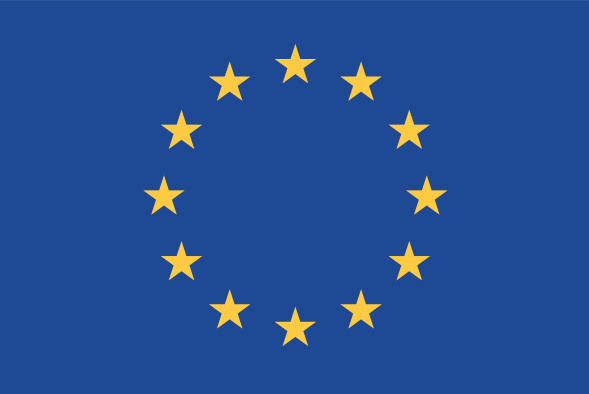Cyril Renaud, Professor of Photonics, University College London, explores the potential of using THz as a means of communication
Since the introduction of optical fibres as a mean of communication, our world has been revolutionised and the amount of data transported over our networks is ever increasing. However, this transforming improvement in wired data transport is still not fully matched for wireless data.
To enable a wireless infrastructure that would fully match the capacity of our wired network one would therefore need to go beyond our current radio technology. Looking at different parts of the electromagnetic spectrum is clearly an opportunity, but challenges remain. One solution is to use the so-called THz part of the spectrum, specifically in combination with optical technologies; the world of photonics, where one would use light as electricity is used in electronics.
Why THz?
When we look at the electromagnetic spectrum beyond the range that is currently used in most radio systems it becomes clear that one would need to use frequencies beyond 300 GHz to match what the optical channel can do.
One simple solution would be to use the same optical signal as within the fibre. While such a solution would provide a wireless data rate fully in line with the optical fibre cable performances, it brings in several challenges. Key among them is the need to collimate the beam so that most of the optical energy reaches its target. In that part of the spectrum, when the distance increases, that need becomes stringent and renders the possibility of establishing a communication link difficult. However, using moving mirrors, this technology has been shown to enable full links matching the optical fibre capacity, albeit with a slow tracking capacity limiting the possibility of a mobile end-customer.
As this problem scales with frequency, using a lower frequency range would enable a solution that would provide both the required data flow and the necessary agility to distribute the data to different points at an acceptable rate. This is where the THz range of frequency offers a great opportunity. Within that range, collimation is two to three orders of magnitude easier than with free-space optics. Further, that frequency range is fully compatible with antenna design that enables electronically controlled beam shaping and steering. This would offer higher switching speed than with optical systems, while still enabling data rates matching a typical optical fibre channel.
THz technologies have now been used to demonstrate the transfer of data above 100 Gbit/s either on a single channel or on multiple channels, over wireless distances reaching up to a km. As it stands the technology already provides several answers to the challenges of future wireless networks. There are two main technological contenders to act as transmitters for THz link and we will now discuss one of them based on the use of optical signals.
The role of photonics
One of the key advantages of using free-space optics is the reduced number of transitions between the fibre optic signal and the wireless signal. In a classical radio system, one would have to receive and decode the optical signal to then re-encode it on the radio signal. The same would happen when using electronic-based THz sources, but another solution exist; photonics.
This technology takes advantage of the fact that when combining two optical signals at different frequencies in a photodetector, you will obtain a signal at the frequency difference. That process, photomixing, is the key to produce THz signal from the optical channel. When used, we can transfer seamlessly the optical data signal onto the THz wireless signal, thus enabling a fully integrated wired and wireless network similar to the use of free space optics with the advantages of the lower frequency of operation and the easier beam manipulation.
However, this process introduces losses in the link which ultimately will affect its performances and might limit either the distance or the amount of data. Therefore, it is imperative to develop efficient photomixers, with the possibility to emit sufficient power for the wireless link. Such a photomixer has been developed within the last 20 years, and has proven to be the most efficient to reach the THz range. It is called the Uni-Travelling-Carrier Photodetector. The name stems from the fact that only one type of electrical carriers, electrons, are transported within the device, when a typical photomixer will have two types of carriers. This offers several advantages in the operation of the devices. First, as electron travel faster than holes, the other type of carrier, the devices are intrinsically more efficient to be used as photomixers in the THz range. Further, the maximum power that is emitted from such devices is dependent on the number of carrier present across its electrodes, the higher the number is the lower the power will be. In Uni-Travelling-Carrier Photodetectors, having only faster electrons transiting between electrodes, the number of carriers present is lower leading to higher emitted power.
These devices are now widely used in THz photonic links. They have enabled wireless bridges -going transparently from optical fibre to optical fibre- with data rates up to 100 Gbit/s over 10 m. This proves the potential of the technology to integrate a future high data rate wireless network within an optical fibre network enabling access to high performances to all customers.
What is next?
While high data-rate links transparently integrated within an optical fibre network have been demonstrated, to fully address the need of future wireless networks, several challenges are remaining.
Most demonstrations have been done in a research laboratory environment and there is still a need to integrate all the photonics components and electronic together. Luckily, integrated photonic is making progress and, in particular in Europe, several key elements of integrated THz photonics technology have been demonstrated.
Finally, these technologies still need to be widely demonstrated in-situ and a number of demonstrations are planned in shopping centres, data centres and airports. These will show to a wider public the wonderful potential of THz photonic communication to be a key component of future wireless networks beyond 6G.
Optically controlled THz phased array antennas has received funding from EPSRC-UKRI (UK Research and Innovation) under the Grant Agreement no. EP/R042578/1.
 Terahertz based Ultra High Bandwidth Wireless Networks -TERAPOD (no. 761579), MARIE SKLODOWSKA-CURIE INNOVATIVE TRAINING NETWORKS, TERAOPTICS (no. 956857) and have both received funding from the European Union’s HORIZON 2020 Research Programme.
Terahertz based Ultra High Bandwidth Wireless Networks -TERAPOD (no. 761579), MARIE SKLODOWSKA-CURIE INNOVATIVE TRAINING NETWORKS, TERAOPTICS (no. 956857) and have both received funding from the European Union’s HORIZON 2020 Research Programme.
*Please note: This is a commercial profile
© 2019. This work is licensed under CC-BY-NC-ND.











